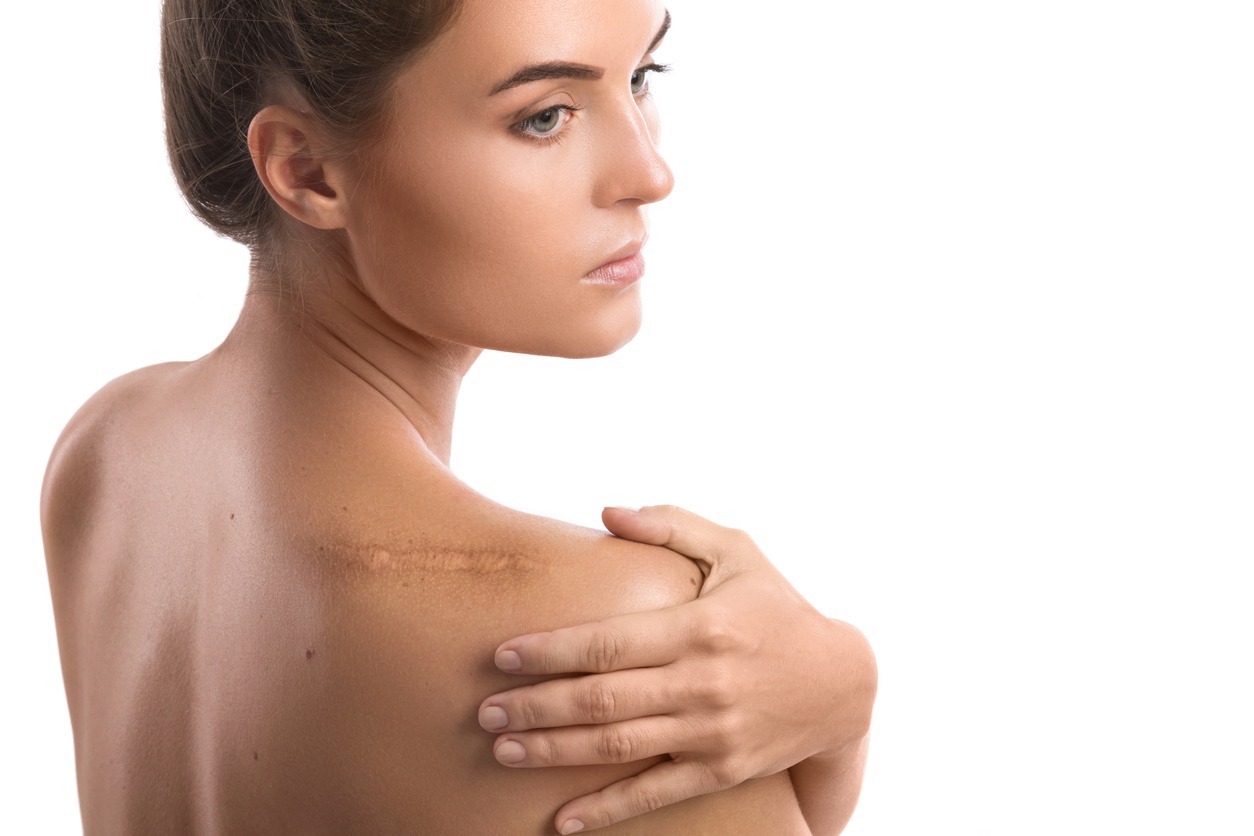The most common scars we treat are post-surgical scars, traumatic scars and acne
scars.
The wound healing process after a surgery or trauma takes several months to be fully completed. Scar formation can be influenced by several factors including genetics, origin of the scar and location.
Stretch marks are also a type of scars that are formed by stretching the skin and therefore rapidly causing ruptures in the collagen and elastin fibers. They can appear during growth spurts in puberty, pregnancy, rapid weight gain or loss, rapid muscle growth (intense weight training) but can also be connected with certain hormonal disorders. Like scars, they are permanent, but they don’t always stay very visible.
Initially scars and stretch marks ar red and after some months they turn pale and fade spontaneously..
A minimal scar after surgery is normal and often does not need treatment but scars or stretch marks that stay red, become too thick (hypertrophic scar or keloids) or that are depressed (atrophic scars) can be treated to reduce the relief and/or colour.
Different techniques will be used for scars revision depending on their origin, but also their colour, thickness and location.
We combine lasers and energy based systems with surgical procedures and injections of steroids, hyaluronic acid or biostimulators.
Combinations always work better than a single technique and, when possible, they are performed in the same session.
Lasers are a key part of scar treatment: we use vascular laser for red scars, pigment lasers or non-ablative laser for reduction of brown scars, fractional ablative CO2 laser, Genius microneedling RF and non-ablative LaseMD Ultra laser for improvement of scars and stretch marks.
Improvements are very progressive. The number of sessions needed can be
variable (average 3-4), and treatment interval between the sessions is usually 1-
2 months.
